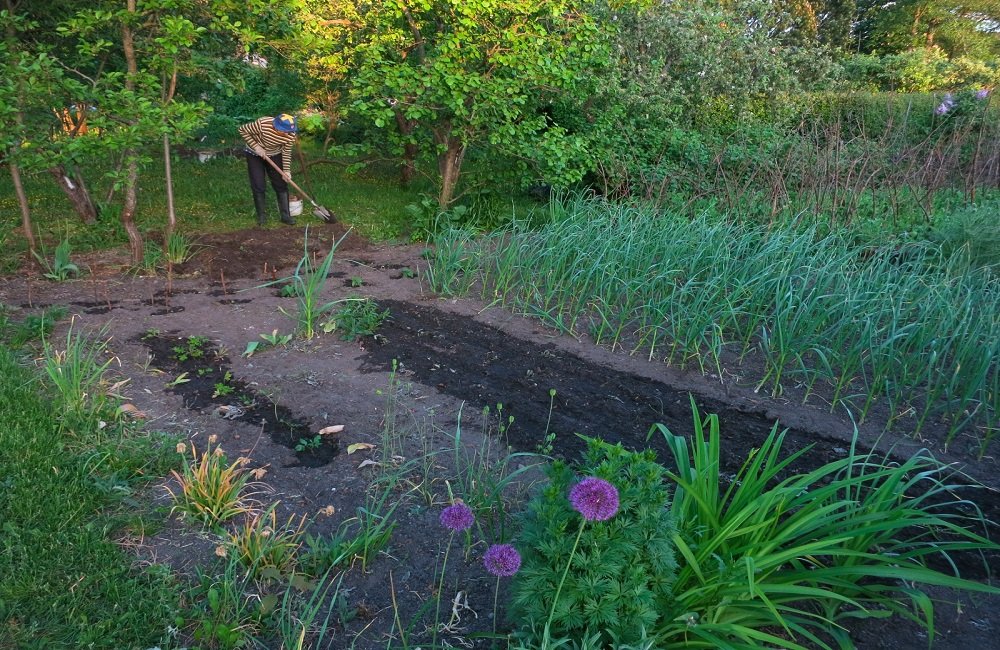Gardening
How To Grow Beans Easily!
One of the simplest and most fruitful crops you can cultivate at home is beans. Beans are a versatile, nutrient-dense, and quick-growing crop that can be grown in any size garden, backyard, or even a balcony using containers. They are a mainstay in many home gardens because they provide a variety of flavors and nutrients, from robust kidney beans to snappy green beans.
In this article, you’ll learn:
- What you need to grow beans
- 8 simple steps to growing beans at home or in a garden
- Frequently asked questions about growing beans
What Do I Need to Grow Beans?

Before you begin planting, make sure you have the following:
1. Bean Seeds
Choose the type of beans you want to grow:
- Bush Beans – Compact and good for containers or small spaces.
- Pole Beans – Require support but produce more over time.
- Runner Beans – Similar to pole beans but thrive better in cooler climates.
- Dry Beans – For harvesting mature beans like kidney, black, or pinto beans.
2. Soil
Beans prefer well-drained, loose soil with a pH of 6.0 to 6.8. You don’t need highly fertile soil; in fact, too much nitrogen can reduce pod production.
3. Sunlight
Beans need full sun, which means at least 6-8 hours of direct sunlight daily.
4. Water
Beans want soil that is consistently moist, particularly when they are flowering and developing pods. Don’t overwater; this can lead to decay.
5. Containers (optional)
If growing indoors or on balconies, use containers that are at least 8–12 inches deep.
6. Trellis or Supports (for pole or runner beans)
Poles, cages, or strings help vertical varieties grow upward and increase yield.
8 Steps to Grow Beans at Home or in Your Garden

Step 1: Choose the Right Bean Variety
Choose between pole beans for continuous output for vertical planting, or bush beans for quicker harvests and compact growth. Choose according to your preferences, climate, and available space.
Step 2: Prepare the Soil or Containers
Use a garden fork or spade to loosen the dirt. Add aged manure or compost to enhance drainage and structure. Use a premium potting mix for containers.
Step 3: Plant the Seeds
- When: Plant beans after the last frost, once the soil temperature is above 50°F (10°C).
- How: Sow seeds 1 inch deep and 2–4 inches apart.
- Spacing: Space rows 18–24 inches apart for bush beans, and 3–4 inches for pole beans with supports.
Step 4: Water Gently and Regularly
Don’t let the soil get too wet. To avoid sickness, don’t water your leaves. Water the base of the plants or use a soaker hose.
Step 5: Support Pole or Runner Beans
To allow plants to climb as they grow, install pegs, poles, or a trellis early. If you need to help them latch on, tie them loosely.
Step 6: Mulch and Weed
To keep the soil moist and prevent weeds, spread organic mulch such as straw or shredded leaves. To lessen competition, keep the area clean of weeds.
Step 7: Monitor for Pests and Diseases
Watch for:
- Aphids
- Bean beetles
- Slugs/snails
- Powdery mildew
Use natural deterrents like neem oil, diatomaceous earth, or introduce beneficial insects like ladybugs.
Step 8: Harvest the Beans
- Green beans: Harvest when they’re about 4–6 inches long and still tender.
- Dry beans: Let the pods dry on the plant until they rattle. Then remove and shell them.
- Frequent picking encourages the plant to produce more pods.
Common Questions About Growing Beans

1. Can I grow beans indoors?
Indeed! Bush beans can be grown indoors in containers as long as there is adequate light, particularly close to a south-facing window or with grow lights.
2. How long do beans take to grow?
- Bush beans: 50–60 days to harvest.
- Pole beans: 60–75 days, but produce over a longer period.
- Dry beans: 90–120 days depending on variety and climate.
3. Can I grow beans in pots or containers?
Of course. For containers, choose for bush or compact varieties. Ensure that the pot has adequate drainage and is deep. For pole varieties, use a trellis.
4. Do beans need fertilizer?
As nitrogen-fixing plants, beans create their own nitrogen with the aid of soil-dwelling beneficial bacteria. Excessive fertilizer, particularly nitrogen-rich fertilizer, might result in few pods and lush leaves.
5. How many bean plants should I grow?
For a small household, about 10–15 bush bean plants per person is a good start. For pole beans, fewer plants can still yield a good harvest since they produce over time.
6. Why are my bean leaves turning yellow?
This could be due to:
- Overwatering
- Poor drainage
- Lack of sunlight
- Disease (like root rot or rust)
7. Can I grow beans year-round?
In warm climates, beans can be grown almost year-round. In cooler regions, they’re best grown during late spring to early fall.
Tips for Growing Healthy Beans
- Rotate crops: Don’t plant beans in the same spot each year to avoid soil-borne diseases.
- Avoid working wet plants: This can spread disease.
- Use companion plants: Beans grow well with carrots, cucumbers, corn, and marigolds. Avoid planting with onions and garlic.
Conclusion
Beans are inexpensive, simple, and pleasant to grow at home. Beans can adapt to your environment and provide a bountiful yield whether they are grown in a backyard plot, raised bed, or container. You can eat crunchy, fresh beans straight from your garden with a little preparation, perseverance, and care.
Follow the easy procedures listed above, starting with the essentials: healthy soil, high-quality seeds, sunlight, and water. One of the most satisfying crops for any gardener, novice or expert, is beans, which you will soon be harvesting yourself.

